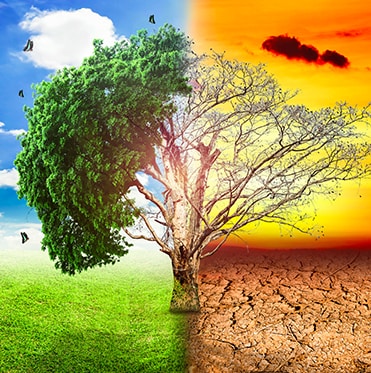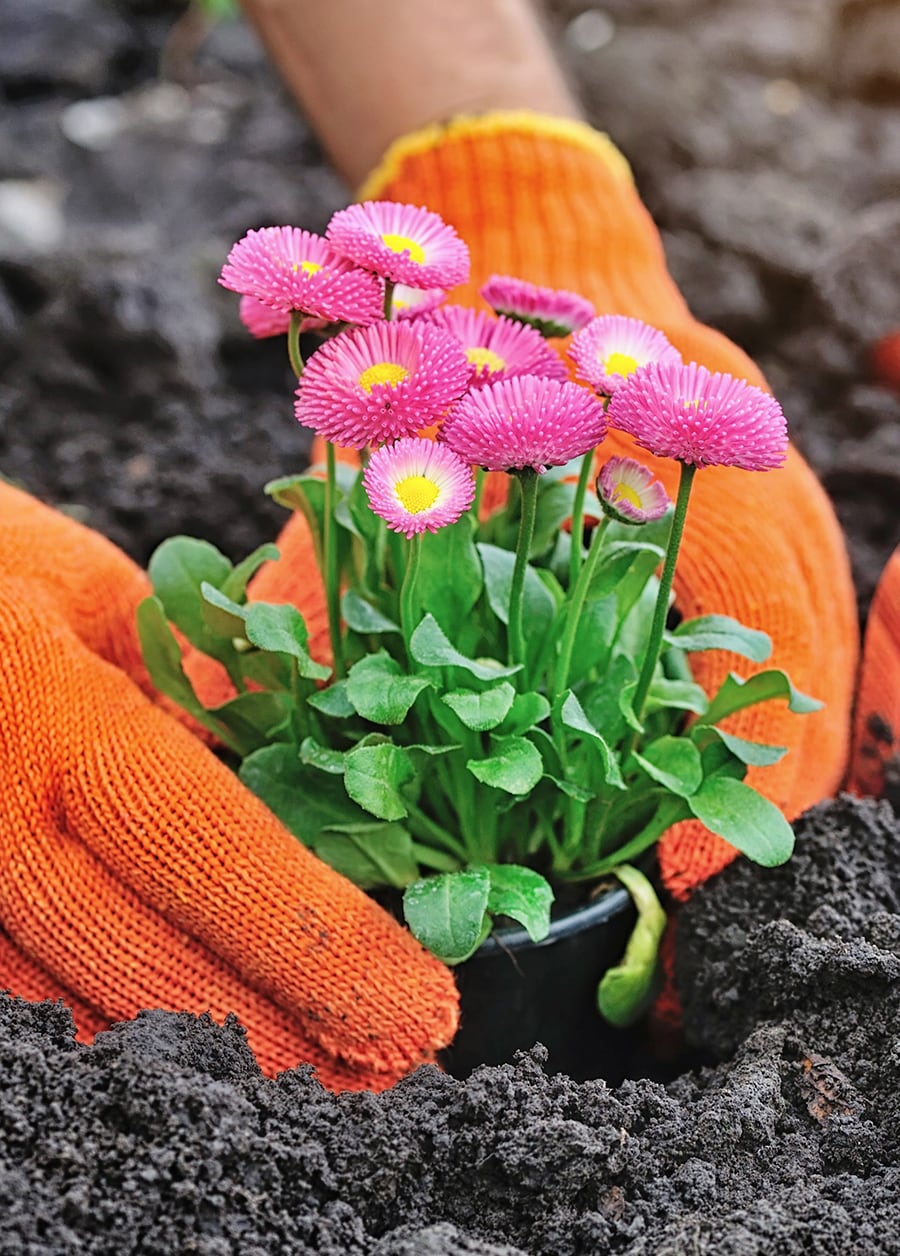Special Awareness Days
June 5th- World Environment Day

Ready to Order?
If you are ready to order, please contact Customer Service:
Telephone: 1 (800) 361-6128 Fax: 1 (800) 563-9196
Introduction
World Environment Day began in 1974 and is now widely celebrated in over 100 countries across the world. Each year, a different country hosts the events and gets to select a theme.

This year is the 50th anniversary of World Environment Day and the host is Côte d'Ivoire in partnership with the Netherlands. The theme is #BeatPlasticPollution
To learn more about plastic pollution check out these resources:
Ocean Trash: 5.25 Trillion Pieces and Counting, but Big Questions Remain (nationalgeographic.org)
World Environment Day 2023 (unep.org)
Another contributing factor to the breakdown of our valuable ecosystems is air pollution. Human activities such as construction, transportation, mining, industrial work and many others disrupt the delicate balance and energy flow of the ecosystem and cause rapid and harmful changes in the environment. These changes may stress certain species and reduce their ability to respond and survive.
Did you know:
- Ground level ozone pollution is expected to reduce staple crop yields by 26% by 2030.
- Approximately 7 million people across the world die prematurely because of air pollution.
- Of these, around 4 million come from the Asia Pacific area.
Note: The following activities focus on air pollution as one contributing factor in the breakdown of ecosystems. You and your students may wish to explore many facets of ecosystem restoration.
The official website for World Environment Day is a great place to look for latest news and events and connect with the cause on social media.
Activity Bursts
Grades K-2
Environmental Advocacy, Health, Science
Note: You may choose to demonstrate this activity rather than having students actively take part.
Before this lesson, ask each child to bring in a small clean canning jar with a band-type lid. You will also need the following ingredients: baking soda, paper coffee filters or muffin cups and either vanilla or an essential oil. You will also need a Tablespoon (15 mL) measure and stir sticks or spoons.
Gather students and ask:
- What do you think air pollution means?
- Do you think the air we breathe is clean?
- How do we know when our air isn’t clean? Can we smell anything? Can we see anything? Does our body react when something harmful is in the air?
Watch the following air pollution video with your students: Air Pollution: Causes, Effects and Solutions.
Ask:
- What kinds of air pollution did you see in the video?
- Have you ever noticed air pollution in your school, home or neighbourhood? Where?
- What are some of the things that we can do to help reduce air pollution?
- Did you notice that there was a spray can in one of the pictures?
- Why do you think spray cans might be harmful for the air we breathe?
Explain that our bodies need clean air in order to survive. Sometimes we can smell things like fertilizers or animal manure or some smells from big factories. We can also sometimes see the smoke coming from smoke stacks in houses and factories.
Inside our houses, some of the things that pollute our air are things that we use every day like hair dryers, spray paint, nail polish, and cleaning supplies. Even the dander from our pets can affect the air and cause health and breathing issues for some people! Many people use air freshener sprays to cover up those yucky smells but that can cause problems too!
Explain that most air fresheners that we spray from a bottle or can contain chemicals that actually aren’t good for us or the air we breathe.
Tell the students that there are some natural products that we can use that will help to cover up some of the nasty smells we get in school, in our homes and in our neighbourhoods.
Explain that they are going to make an air fresher that will help their classroom to smell nice and won’t be harmful to the air we breathe.

Here are the instructions:
- Make sure the jars are clean and don’t have any strong smell.
- Place a small amount of baking soda in the bottom of the jars (About 3 or 4 Tbsp. or 50-60 mL)
- Add about 1 Tbsp. (15 mL) of vanilla or essential oil.
- Stir together
- Place the coffee filter or muffin cup over the lid of the jar.
- Screw the top on securely.
And that’s it! You have created your own natural air freshener.
Have students take it home and explain what they have created and why. Encourage them to talk to their families about other ways to reduce air pollution.
Grades 3-5
Environmental Advocacy, Health, Art
Air pollution is one of the leading contributors to the breakdown of Earth’s ecosystems and it is important to find ways to repair the damage so that we can live in harmony with nature. Reducing the impact of air pollution is one way to do this.
Ask:
- Why do you think air pollution would be an important theme in caring about our environment?
- Have you noticed any examples of air pollution in our school, home or community?
Have students view the UN Environment video “Walk Home” and ask them to jot down any examples of air pollution that they see.
Share their responses, making a complete list on a chart or white board. Ask the class what they think is the message of this video.
Explain that we all need clean air in order to survive. As more people inhabit the earth and more industry appears and transportation increases, our air quality is being affected. Some people have sensitivity to certain things in the air, such as dust, aerosol sprays, smoke, and even pet dander. People who have allergies or asthma are even more affected by the air they breathe.
In groups, ask students to brainstorm slogans or key words that might make an impact with everyone and make them think about the importance of clean air. Share the responses and explain that the task for today is to make posters that help people in their school, home and community to be more aware of air pollution.
Provide poster boards, magazines, newspapers, and any other materials that might be helpful in creating a unique poster that would stand out from any others that may be posted. The following site has some great ideas for impactful posters:
Share and then collect ideas as to where to place the posters for the best impact. If possible, deliver and post them around the community.
Close by reminding students that even small steps like the posters they made today can have a big impact on the air quality and their health in the future!
Grades 6-8
Environmental Advocacy, Health, Critical Thinking, Media Literacy, Language Arts
Air pollution is one of the leading contributors to the breakdown of Earth’s ecosystems and it is important to find ways to repair the damage so that we can live in harmony with nature. Reducing the impact of air pollution is one way to do this.
Ask students:
- Do you think we have an air pollution problem here in Canada?
- Have you ever heard of the air quality index?
As a class, view the following video “Canada's Air Quality Health Index explained” from CBC news. Have student jot down the main messages from the video.
After viewing, ask students to share their observations. Ask:
- Does your family ever check the air quality index when you check the weather forecast?
- Have you ever stayed inside because of air pollution issues?
Invite students to find out more about the air quality index and to prepare a short presentation for the class. They can work alone, in pairs or in small groups. The following sites may be helpful for online research:
https://www.canada.ca/en/environment-climate-change/services/air-quality-health-index.html
https://weather.gc.ca/mainmenu/airquality_menu_e.html
https://www.canada.ca/en/environment-climate-change/services/air-quality-health-index/about.html
Their presentation could take the form of a written report, an electronic slideshow, a video presentation, or a short play. Criteria for the presentation could include:
- A short explanation of what the air quality index is and how it is measured.
- Visuals of some sort, such as videos, newspaper clippings, photos, etc.
- A description of how air quality affects the environment and our health
- At least one suggestion on how we can help to improve air quality in our homes, schools, and communities.
Share the presentations and discuss.
Consider sending some of the presentations to the local paper, news media, or your local politician.






